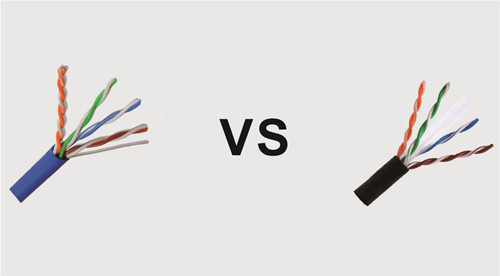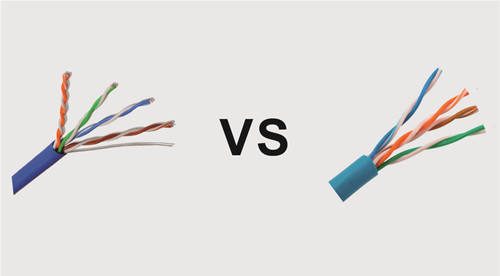News & Press
NEWS & PRESS
Zhejiang Tianjie Industrial Corporation
Tel: +86 571 23656026
Fax: +86 571 23656068
Email:info@tian-jie.com
Address: Linglong Economic Development Zone, Lin'an Hangzhou, China 311301
SERVICE
Copyright: Zhejiang Tianjie Industrial Corporation 浙ICP备19019105号-1
CAT 6 Ethernet Cables Explained
Author:
Source:
Release time:
2018/09/19
[Abstract]:
Category 6 is an Ethernet cable standard defined by the Electronic Industries Association and Telecommunications Industry Association ((EIA/TIA). CAT 6 is the sixth generation of twisted pair Ethernet cabling, which is used in home and business networks. CAT 6 cabling is backward compatible with the CAT 5 and CAT 5e standards that preceded it.
How CAT 6 Cable Works
Category 6 cables support Gigabit Ethernet data rates of 1 gigabit per second. They can accommodate 10 Gigabit Ethernet connections over a limited distance—164 feet for a single cable. CAT 6 cable contains four pairs of copper wire and utilizes all the pairs for signaling in order to obtain its high level of performance.
Other basic facts about CAT 6 cables:

Ends of a CAT 6 cable use the same RJ-45 standard connector as previous generations of Ethernet cables.
Printing along the length of the cable sheath identifies it as CAT 6.
An enhanced version of CAT 6 called CAT 6a supports up to 10 Gbps speeds.
CAT 6 vs. CAT 6A
The Category 6 Augmented (CAT 6A) cable standard was created to further improve the performance of CAT 6 for Ethernet cables. Using CAT 6A enables 10 Gigabit Ethernet data rates over a single cable run up to 328 feet—twice as far as CAT 6, which supports 10 Gigabit Ethernet also, but only over distances up to 164 feet. In return for the higher performance, CAT 6A cables tend to cost noticeably more than their CAT 6 counterparts, and they are slightly thicker, but they still use the standard RJ-45 connectors.
CAT 6 vs. CAT 5e
The history of cable design for Ethernet networks resulted in two separate efforts to improve on the previous generation Category 5 (CAT 5) cable standard. One eventually became CAT 6. The other, called Category 5 Enhanced (CAT 5e), was standardized earlier. CAT 5e lacks some of the technical improvements that went into CAT 6, but it supports Gigabit Ethernet installations at a lower cost. Like CAT 6, CAT 5e utilizes a four-wire pair signaling scheme to achieve the necessary data rates. In contrast, CAT 5 cables contain four wire pairs but keep two of the pairs dormant.
Because it became available on the market sooner and offered "good enough" performance for Gigabit Ethernet at a more affordable price point, CAT 5e became a popular choice for wired Ethernet installations. This plus the relatively slow transition of the industry to 10 Gigabit Ethernet significantly slowed the adoption of CAT 6.

Limitations of CAT 6
As with all other types of twisted pair EIA/TIA cabling, individual CAT 6 cable runs are limited to a maximum recommended a length of 328 feet for their nominal connection speeds. As mentioned previously, CAT 6 cabling supports 10 Gigabit Ethernet connections but not at this full distance.
CAT 6 costs more than CAT 5e. Many buyers choose CAT 5e over CAT 6 for this reason, at the risk that they will need to upgrade cables again in the future for better 10 Gigabit support.
Source:https://www.lifewire.com/cat6-ethernet-cable-standard-817553
Previous article:
Happy Mooncake Festival
Next article:
“浙江制造”团体标准评审会在我司举行





